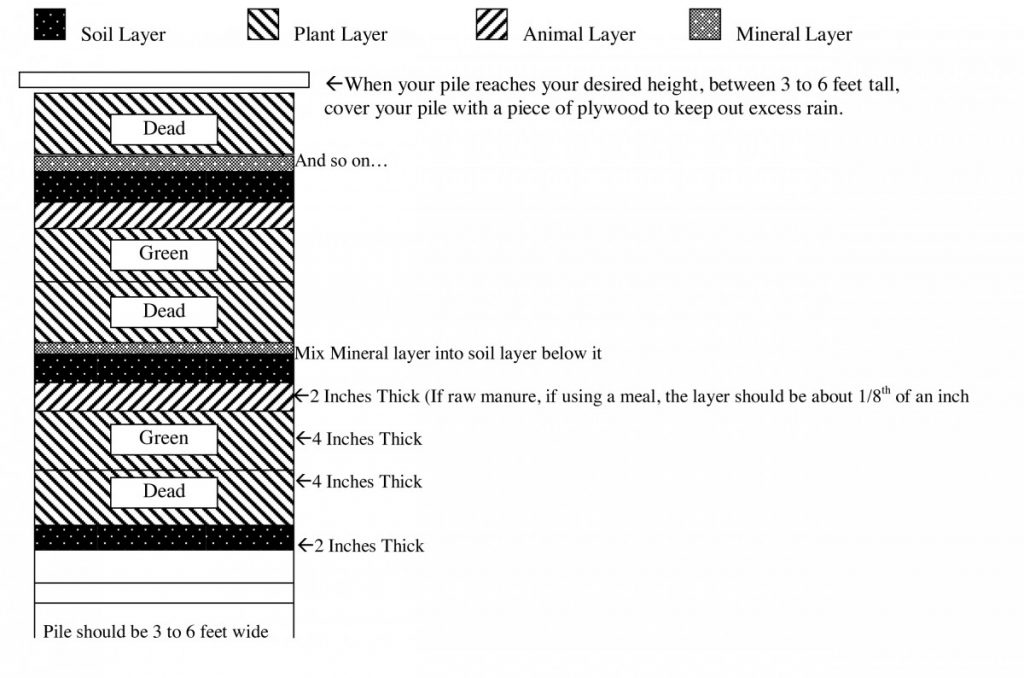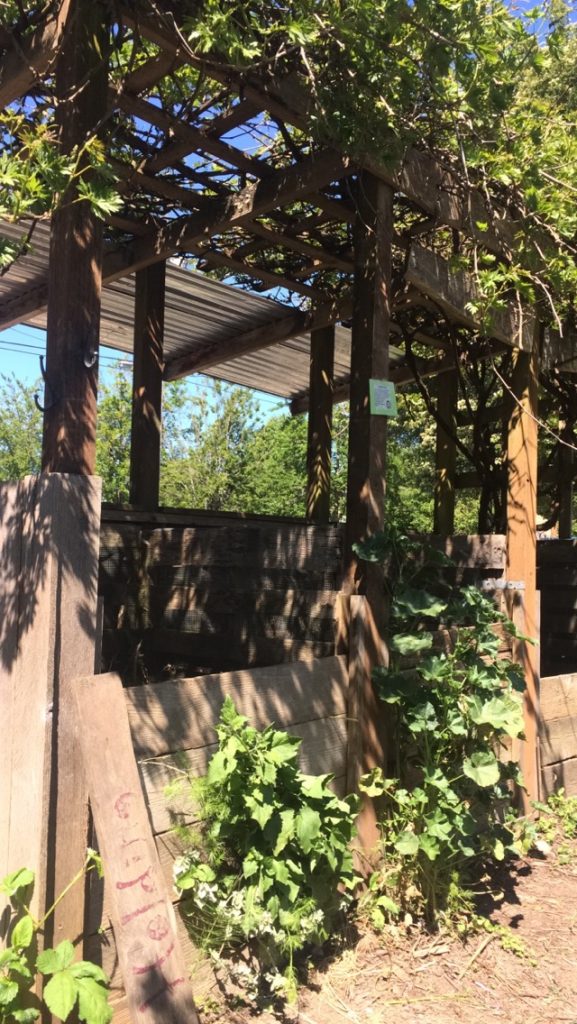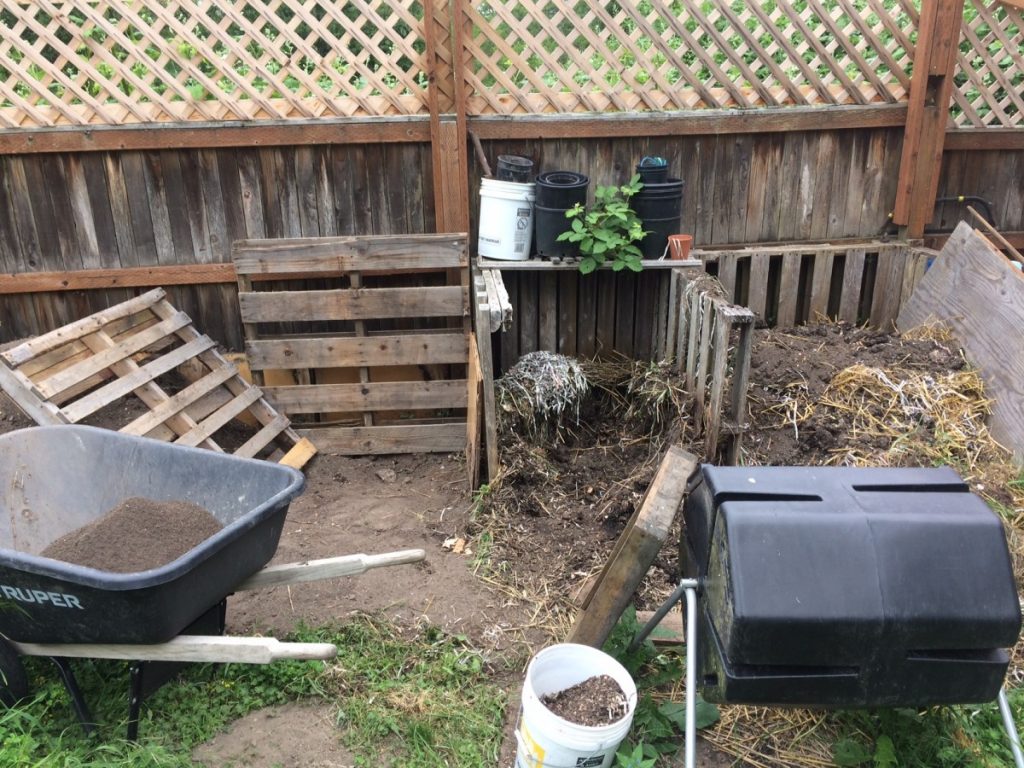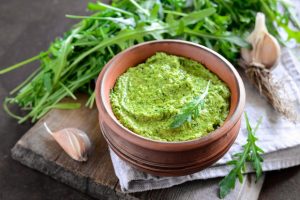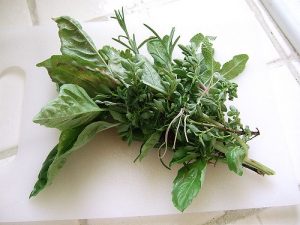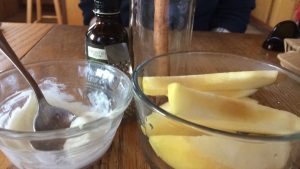The Science of Taste
Neurogastronomy and Organic Gardening
Author: Sean (page 1 of 3)
Week 9 Tasting Lab
A wonderful lunch was prepared by Sarah, Karen, and Brittany. Sarah prepared a quinoa tabbouleh, Karen brought in a peanut soup, and I wish I knew what Brittany used to make the soup that she prepared because it had a rich, cheesy texture I hadn’t had before in a soup. All of the dishes brought were outstanding. Given all of the political strife and jumbled emotion and energy being transposed and reverberated throughout the student body and through RAD services, professors, and other affiliates on campus this meal provided a safe haven to relax from academic studies and enjoy the presence of one another. Karen’s soup she prepared held the dense peanut flavor and the texture was thin which made me think why it was enjoyable because of distinct memories of peanut butter having a thick texture. The tabbouleh that Sarah brought inspired a quick study of the history of tabbouleh because last weekend a member of the community at Fertile Ground brought tabbouleh as a gift to Gail, Chris, and I while we were working on the compost bins. I found that it is a mezze, or a selection of small dishes that is often served before wine tasting (I can’t help but wonder about the neuroscience behind that), which went very well with the two soups that were provided. During the meal itself, I couldn’t help but smile when I struggled to eat the green leaf in my vegetarian salad which helped internalize the room for growth in my ability to prepare salads that are not exclusively leafy greens. Brittany’s soup was heartfelt and we had a powerful conversation about breath, physiological stress, and relaxation while we ate. She is wonderful.
Tea Tasting
This week’s tea tasting topped last week’s once again. Being a part of Kotomi’s growing process the past two quarters has been an unbelievable joy. This week we tasted Macha – a powerful tea that held warmth in my belly. The presence of the collective group this week was remarkable. In last week’s tea tasting experiment, Kotomi discussed the history of Chinese and Japanese tea practitioning styles and mentioned how a Chinese practitioner of tea tasting offered her to come in and show how she learned to practice tea. Right before the Kotomi tea tasting the previous week, I was in a position to present to the class as a requirement and I was not feeling confident in the presentation which held a bias for the perception of the cinnamon and music combination in the overall experience. Kotomi learned from my errors and the next week demonstrated the most powerful experience I have ever had with tea. I felt the singing bowls as large spheres of energy reverberating off of the rim of the cup towards me. I am unable to remember the entirety of what Kotomi said, but afterwards Kotomi discussed how thinking through emotion and the nervous system can inhibit being, which reminded me of a previous week’s seminar discussion about thought being interconnected with emotion. Given Sarah’s reaction from last week and this week’s tasting labs, Kotomi learned from observing my presentation and from her strength I learned the significance of sustaining the perception of emotions and nervous system care. The macha we tasted was silty green with a thick viscosity in appearance and had a musky, rich flavor with silty texture and rich, complex flavor. Kotomi discussed her amazed respect for the Senorouku tea master ceremony which uses charcoal to heat the tea kettle to the precise temperature, the use of a whisk, frankincense, and how she decided to add flowers to her final presentation to the class. Once again, it has been wonderful having Kotomi do the tea tastings for the program and seeing her growth over the last two quarters.
I learned the SPAM method with Gail at Fertile Ground, layering Soil, Plant, Animal, and Manure to build a rich compost. This method comes from the Black Lake Organic Nursery in Olympia.
“The making of quality, humanized humus requires reaching a certain stage of decomposition through “cooking” diverse ingredients in a “biological fire.” This “fire” is generated by feverishly working and rapidly reproducing microorganisms under optimal temperature, moisture, aeration, nutrient and fuel (food) conditions. A minimal pile size (one cubic yard, or 3 ft by 3 ft by 3 ft) is needed to insulate the succession of working organisms and allow heat build-up to about 130 to 160 degrees. A temperature of 140 degrees Fahrenheit is optimal. This heat build-up cannot occur in sheet composting, low piles, or poorly constructed piles using a low diversity of materials such as leaves or all grass clippings. The best initial composition will include animal manures or animal by-products and rapid construction of a complete pile over a period of a few days or less.”
We worked together as she explained the composting system to sustain the weeding that I was doing in the sidewalk garden lots. She talked about the general principle behind the three bins, one for green, one for woody, and one for the layering. During that process she explained to me that we need more green which breaks down quicker (the nitrogen) to add to the woody brown dead stuff (carbon), to build the layers with a green and brown ratio, adding chicken manure, and then watering the compost to create a rich hummus like what you find on the forest floor.
This information was so helpful to understand the dynamics of the layers, to build heat and break down the organic matter into hummus. At Red Dog Farm the composting was on such a grand scale, it was hard to interpret how it really worked. Gail reminded me that however balanced we want the ratio of carbon and nitrogen to be, we have to go with the flow of the seasons and compost what is available. On Red Dog Farm, time spent on the clock prioritizes action and we let nature break it down for maximum production. I am applying this layering method to our small scale gardening project in Port Townsend. Improvements are needed to break down the soil faster, utilizing the black plastic compost tumbler into the rotation.
Hands on work reinforced knowledge I obtained at Fertile Ground. Gail’s instructional teaching of principles allowed me to reinforce my own understanding of the principles and create a successful, organized system of composting.
Last week’s sound experiment of sourdough flatbread with arugula, basil, lemon, and olive oil spread was a failure and I couldn’t help but wonder why it wasn’t as successful as the yogurt experiment.
Neuroenology: How the Brain Creates the Taste of Wine .
© 2015 Shepherd; licensee BioMed Central. This is an Open Access article distributed under the terms of the Creative Commons Attribution License which stated that,
“The multiple neural mechanisms involved in producing flavor include sensory, motor, cognitive, emotional, language, pre- and post-ingestive, hormonal, and metabolic. It can be claimed that more brain systems are engaged in producing flavor perceptions than in any other human behavior.”
To successfully engage in the multisensory experience of intentional eating I needed to utilize as many senses as possible.
“Flavor is a multi-modal sensation. It is multisensory, involving all the sensory systems of the head and upper body.” (Shepherd 2015)
Of the five senses, my pesto engaged a strong visual reaction – which is key.
Closer visual inspection strongly influences the expected flavor (“We eat first with our eyes”) (Shepherd 2015)
The fresh pesto color was bright green like guacamole or the first green shoots of spring – a good first impression in the experience of eating this meal.
TOUCH- a creamy textured paste
SOUND- In addition to the crunching sound sensation, I added brass music enlisted to support the bitter taste.
“The multisensory perception of flavor” (https://doi.org/10.3389/fpsyg.2013.00321) and “As bitter as a trombone: Synesthetic correspondences in non synesthetes between tastes/flavors and musical notes” (doi:10.3758/APP.72.7.1994)
TASTE-pungent (fresh arugula), sour (sourdough), bitter (walnuts), lemon, garlic and the crunch of crispy sourdough, yet what was missing was the SMELL, which seems to be the predominate sense involved with the fabrication of flavor.
“So most of what we experience as flavor is odor or aroma.”
McGee, H. (2004). On food and cooking: The science and lore of the kitchen. New York: Scribner.
If I prepared this dish again, I would increase the aroma of the pesto by adding more garlic or an herb with stronger aroma, maybe thyme, rosemary, sage, mint or even nutmeg. (McGee 2004)
David Shepard states that, “Cooking would obviously have also enhanced the flavors of the food.”
Although, when I tried cooking the pesto into the sourdough, it lost its color, its zing and flavor.
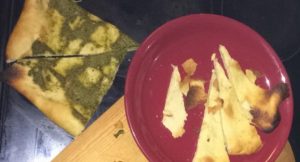 “Flavor therefore has the quality of an illusion. This makes flavor vulnerable to many influences, as is well recognized by food producers in formulating and promoting their foods. Food producers spend millions on research to use the sensory illusions to influence our choices of food, in our homes as well as in the supermarket and the school cafeteria.” (Shepherd 2015)
“Flavor therefore has the quality of an illusion. This makes flavor vulnerable to many influences, as is well recognized by food producers in formulating and promoting their foods. Food producers spend millions on research to use the sensory illusions to influence our choices of food, in our homes as well as in the supermarket and the school cafeteria.” (Shepherd 2015)
The creation of illusion as found is the basis for the commodification of food through the spice industry and artificial chemical flavorings – which is another whole topic on its own.
Week 7 was spent applying information learned from “The multisensory perception of flavor” (https://doi.org/10.3389/fpsyg.2013.00321) and “As bitter as a trombone: Synesthetic correspondences in non synesthetes between tastes/flavors and musical notes” (doi:10.3758/APP.72.7.1994) a tasting lab in Week 8.
When looking at figure 3 in the synesthetic correspondences in non synesthetes article, I saw that there was a higher approval rate amongst the tasters for the piano sound throughout the five groups in the pleasantness rating graph relative to the approval rating of the brass in the intensity and the complexity graphs, and a relatively neutral response for the strings and woodwinds.
“Brass was often matched to unpleasant stimuli, whereas the piano was preferred for pleasant tastes/flavors” (Cristinel & Spence)
The table 1 chart shows that vanilla and sucrose had an extraordinarily high concentration relative to the incredibly low concentration of the citric acid and caffeine. Figure 2 shows that out of a maximum count of 68 (34 participants doing two tests) at least 10 more people matched piano to sucrose and brass instruments to caffeine than the correlation with the pairing of strings and woodwind instruments to coffee. The appreciation of sucrose and caffeine may be related to what type of memories are paired with those flavor associations.
“The main point is that, whereas the representation of smells in the olfactory bulb is driven by stimulus properties, the representation in the olfactory cortex is memory based.” (Shepherd: 103)
“In the west, we describe the aromas of strawberry, caramel, and vanilla as smelling “sweet” (Stevenson and Boakes, 2004).” (Spence 2015)
When looking at the chart on page 392 and 393 of On Food and Cooking: The Science and Lore of the Kitchen I noticed cinnamon had a description for the fresh, pine, citrus, floral, woody, warm, and penetrating flavor components, but not distinctive. Other spices with descriptions for several penetrating flavor components had distinctive smells to them. I remembered from last quarter Meghan mentioning how effective cinnamon can be used as a sweet substitute. In the synesthetic correspondences in non-synesthetes article, figure 2 shows an even count from the participants when identifying woodwinds and strings with vanilla.
“For example, the odors of vanilla, caramel, strawberry, and mint induce sweetness enhancement in western countries where people often experience those odors with sucrose.” (Auvrey & Spence 1018)
Supplies: small grater, plain yogurt, cinnamon sticks, bowl, vanilla extract, fuji apple, speakers and song by Ryan Zak – New Life
The experiment facilitator cut the fuji apple into a few slices, applied a few drops of vanilla extract into a bowl with plain yogurt. The participant was asked to close their eyes before the song was played and to mix the yogurt with an apple slice when the sound of cinnamon grinding stopped and to taste. Shortly after the participant finished chewing the apple, the facilitator asked an unexpecting participant what the yogurt tasted like.
The experiment provoked a strong mouthfeel reaction. The music had a soothing effect and the scent of the cinnamon provided an incredibly permeating feeling. The participant focused on the apple’s texture during chewing and when asked the question of what flavor came up, the participant described the powerful mouthfeel reaction rather than the taste of the apple and vanilla-cinnamon yogurt. The participant described a prior intention to enjoy the textural properties of the apple slice which could have contributed to an inability to describe the taste.
“For example, Frank, Van der Klaauw, and Schifferstein (1993) have shown that sweetness enhancement of a sucrose solution that can be elicited by adding strawberry odor only occurs when the participants are asked to rate sweetness and nothing else; however, when they are also asked to judge other qualities, such as sweetness, saltiness, sourness, and bitterness, the sweetness enhancement effect disappears.” (Auvrey & Spence 1020)
Anoth er food lab was practiced to better understand the effect of brass music while tasting on bitter flavors. An arugula, basil, lemon, and olive oil spread was mixed on sourdough flatbread. The results for this sampling were inconclusive because I was not treating it with the same intention (partially because it was my dinner) and while I was excited from the previous success of the last meal, there was no synesthetic response and the feelings were rather anticlimactic. The texture of the flatbread stood out and the bitter and sour flavors of the spread held no connection to the song (EPL cover of My Girl).
er food lab was practiced to better understand the effect of brass music while tasting on bitter flavors. An arugula, basil, lemon, and olive oil spread was mixed on sourdough flatbread. The results for this sampling were inconclusive because I was not treating it with the same intention (partially because it was my dinner) and while I was excited from the previous success of the last meal, there was no synesthetic response and the feelings were rather anticlimactic. The texture of the flatbread stood out and the bitter and sour flavors of the spread held no connection to the song (EPL cover of My Girl).
Sean Dwyer
5/21
WC: 233
“In late 2011, about 400 workers’ rights advocates marched to Trader Joe’s headquarters outside Los Angeles. They wanted to present management with two letters, one signed by 109 rabbis, the other from more than 80 Southern California pastors. Both letters simply asked Trader Joe’s executives to work with the coalition to address labor abuses in the tomato fields – nothing more.” (Estabrook 196)
“That snub was nothing compared with what happened next. Police arrived and ordered the interfaith leaders to disperse, which they did. But as Rev. Halverson walked away, she saw someone from inside the building open the door, step outside, rip the letters from the glass, and crumple them.” (Estabrook 197)
“It’s hard to believe that a group of rabbis and pastors was threatening” (Estabrook 197)
“No matter how hard I try on Sunday to get ready – Monday mornings are always untogether. I’m saying all this to say that I’ll be writing you later in the week when I’m more together.” (Smart-Grosvenor 160)
“My heart beats heavy every time somebody even mentions his name. If your food is life stuff is true then I ain’t got no lie. I ain’t got nobody to cook for.” (Smart-Grosvenor 171)
“Get a holt of yourself. Spring is coming and there will be new songs to sing… P.S. Thanks to Dr. Christiaan Barnard, we know that the heart that beats for you is not always your own.” (Smart-Grosvenor 171)
“The production of food is based on how much money a farmer or a corporation can make from the food they’re growing. Farmworkers are a liability in their financial statements.” (Guillen 5)
The theme from this week’s text is that you can’t run from unprocessed emotion. The first quote regarding the executives of Trader Joe’s shows how a simple request can be perceived as so much more if the capability to do much more is known. The utilization of corporate power was an immature reaction to remove protestors from the scene because it brought up recognition of an unavoidable change as shown in the frustration of ripping letters posted to the glass and crumpling them. As described by the first quote from Vibration Cooking, Stella’s heart beats heavy every time she is reminded of the projected love she felt through the embodiment of her relationship. She has no one to see herself through. The following quote that says “the heart that beats for you is not always your own” helps outline the importance of your own heartbeat and the beauty of hearts beating in unison as touched upon in the following quote about farmworkers being a liability in their financial statements. A farmworker spends time in the field because there is work to be done. A farmer can become complacent in reflecting on the quality of time spent in the field when financial statements are relied upon to show that time was spent. We all have time to spend, and the clock ticks whether we want it to or not.
Sean Dwyer
WC: 360
5/20
“Years of living in the city had convinced Stark that the food-savvy citizens of Gotham would be eager to embrace his off-beat harvest.” (Estabrook 171/172)
“Nosebleed – catch the blood on a piece of brown paper and burn the paper to stop the nosebleed.” (Smart-Grosvenor 136)
“Stark says that paying by the amount picked is simply illogical. Different varieties of tomatoes yield different quantities of fruit.” (Estabrook 176)
“They said they went to each grower and asked for his best. Well, they certainly didn’t come to me. I would have never given them a Cherokee Purple. So who did they go to? I don’t know. At least it didn’t do any harm to my business. My customers still like my tomatoes.” (Estabrook 178)
“Cigar ashes – a dental tip from an eighty-five-year-old lady who uses them to brush her teeth.” (Smart-Grosvenor 136)
“…food had become a very scary subject in our house; we worried that ‘eating the wrong food’ might ‘bring the cancer back’.” (Esquibel 1)
“The bright, sweet pop of taste was followed by a lingering, pleasant tartness – that essential balance that defines a great tomato.” (Estabrook 187)
The arctic seed bank that was going to save us all is flooding
This week’s texts had a theme of beautiful people living their own beautiful lives. The quote about the food-savvy inhabitants of Gotham was written with such elegance it caught my eye and not until reflecting did I understand why. Stark lived it, and knew it. As written in Vibration Cooking, you can stop a nosebleed by catching the blood on a piece of paper and then burning the piece of paper. Some things you can only try to see if they work for you. The following quote from Stark describes how different varieties of tomatoes yield different quantities of fruit, so even if the farmer is willing to create unhealthy competition and stress for the farm workers, the crops would all have to be the same. If you aren’t willing to try new varieties, you might end up clinging to your one remedy; running around bleeding everywhere looking for a brown paper bag and a lighter is a good way to get smoke in your eyes. The following quote suggests that if you do focus on one variety, you best be willing to accept that journalists will be journalists and sometimes there won’t be the opportunity to show your best tomato. Does it matter what a journalist thinks? No. Stark’s customers still like his tomatoes. This had me thinking about page 176 when Stark says he still has a gardener’s mentality. That is why Stark’s customers still likes his tomatoes, not because he doesn’t listen to anyone. The final quote from Vibration Cooking about the eighty-five-year old lady who suggests using cigar ashes made me smile when I looked up if it was possible. It destroys your teeth over time, but the chemistry shows that it will make them whiter. Does that work for an eighty-five-year-old lady? Yes. Does that work for you? Maybe in the moment. The listed quote from Food First #7 describes my inner turmoil over the last few months. I was too busy looking at how white the eighty-five-year old grandma’s teeth were and forgot to show mine with a smile. A culmination of instinct, drive, grit, and little bit of luck through quite the journey is encapsulated in the final quote.
Sean Dwyer
5/20
“To me, Beddard’s fields looked exactly like those of Ag-Mart, Six L’s, Pacific Tomato Growers, or any other large conventional grower.” (Estabrook 154)
“He says that his yields are lower than his chemically dependent colleagues, sometimes significantly, but he more than recoups the differences in yields through the higher prices he can command for organic produce.” (Estabrook 155)
“The main man looked at her and at me, then he walked her to her stateroom. Later he came to my stateroom to offer the apologies of the Holland-American Line. He said, “Believe me, everyone wants you on the boat. We are terribly sorry, etc, etc.” – (Smart-Grosvenor 124)
“For example, the Homestead Act of 1862, a massive federal subsidy program, transferred over 50 million acres of Native American lands to mostly white male colonists and land speculators through 160-acre homesteads in exchange for five years of farming or payment of $1.25 an acre.” (Davy et al.)
“Now, if a squash and a potato and a duck and a pepper can grow and look like their ancestors, I know damn well that I can walk around dressed like mine.” (Smart-Grosvenor 118)
“The funny thing was everyone said I had a glow that evening and I kept saying that I didn’t feel good and the glow they saw was fever. They said I had the glow of health.” (Smart-Grosvenor 104)
https://www.washingtonpost.com/politics/report-trump-says-firing-nut-job-comey-took-off-pressure/2017/05/20/ba35568a-3d2c-11e7-a59b-26e0451a96fd_story.html
This week’s texts triggering passages held a theme of growth and malformed perception. The first quote from Tomatoland demonstrates the absurd homogeneity of commercial farming in order to compensate for the high financial investment of defying nature, which is interestingly reflected in the following quote. The organic Florida tomato farmer uses a very similar method (without harsh chemicals and exploitation of migrant labor) only to get lower yields and he recoups the difference in yield by getting more money for the produce from those who can afford its purchase. Commercial farming has roped this organic farmer into supporting a way of farming that puts pressure on him to put constraints on consumers (or exploit farm workers and/or poison the farmworkers and consumer) because he wants to grow food and not directly hurt people. This reminded me of the main man mentioned on page 124 of Vibration Cooking because saying sorry for the company he works for rather than expressing his gratitude for her patience because he couldn’t think of some way to do the right thing and keep his job is similar to knowing you can get by because people will pay more to not eat poisoned food so he can have more than one farm. That being said, this farmer could decide to use pesticides, and the main man could have decided to not make an apology for the company.
This reminds me of a quote from page 167 in Tomatoland “‘There’s need out there,’ he said. ‘And if no one else is going to fill it, I have to step into the void.’ He shrugged philosophically and added, ‘And even if we fail, those new units will still be there.’” This quote put in perspective the contrast this farmer is creating by showing organic farming in Florida is possible while demonstrating the support consumers will show for a higher quality food product. The food first article touches upon the United States’ history of discriminatory, greedy, and spiteful decision making that has yet again undermined the ability for African-Americans to have opportunities at the expense of Indigenous peoples. The following quote from Vibration Cooking describes the silliness of claiming a living being to be yours because you declare it to be so and then continue to declare power over a person who celebrates the loving embrace of their heritage. The final quote from Vibration Cooking describes Vertemae’s glow when her self-determination left the boundaries of her body and her physical ailment revealed the strength of her spiritual health.
Tasting Lab Lunch: Week 8
Asparagus Stir-Fry
Students: Sean Dwyer, a brown bread made by Meghan, sourcing help from Alana Mousseau
Cut the bottoms of asparagus and trim to size
once bright green, throw in some ginger and chile
then add salad greens after and serve
I used pepper and salt.
Our ancestors understood this solemn truth, dug into the dirt, and built autonomous agrarian villages “for the beautiful ones not yet born.” (Davy et al. 2)
What’s a memorable experience of eating vegetables grown by someone you know? How does this change your experience of eating?
“The funny thing was everyone said I had a glow that evening and I kept saying that I didn’t feel good and the glow they saw was fever. They said I had the glow of health.” (Smart-Grosvenor 104)
Do you have a distinct memory of food and music together? Does the music, the food, or the environment stand out more in your memory? Can it?
Mead Tasting –
The mead tasting was a wonderful experience. The honey water tasted sweet but not overwhelming and the color wheel that was provided opened my eyes to several descriptive tasting words that were unknown to me. I was too interested in the presentation and all of the different types of flavor descriptions that were on the wheel to concentrate on how to describe it. Reflecting on the flavors, the honey water had a slightly fruity, caramel, and woody taste to it. The stronger mead that was mixed with the wine had a more pungent berry, woody, and a slightly caramel taste to it. Something that stood out to me is that in my studies of flavor and taste I read about the sweet, sour, salty, bitter, and umami flavors. On the wheel I noticed that umami was not mentioned and I couldn’t help but smile.
4) Why do you believe society doesn’t discuss complicated design issues to help solve either CCD or Individuation?
It’s a terrifying subject to discuss because it has such profound meaning to our existence and we don’t really know. A question that came up for me after the presentation was how do you raise bees outside of a box? I thought about it and the conclusion that makes sense to me is that bees shouldn’t be raised because they already thrive in a healthy ecosystem. Given the current state of the natural environment, it brings up a sense of fear in myself that can be hard to process while trying to promote Individuation and I imagine that I am not alone in that. Not until we can become confident in our individuality can complicated design issues be discussed with more ease.
5) Have you ever faced a painful part of your individuation process? If so what could society have done to have helped you?
I have faced a few painful parts of my individuation processes, but not with the same gusto that I give towards running from other painful parts of my individuation processes. The most painful aspects of that experience was when I felt unable to connect with people trying to help me because in the past I had run to others for help rather than facing the obstacles I built for myself first before getting support. Often times that happened because I couldn’t put a name to what was ailing me and I put myself in harms’ way to feel justified in my struggle. What this class has taught me is that when people know that you have love in your heart you are much more likely to believe they are there to help. Society as a whole could have encouraged me to ask questions from those who display confidence and make me feel good and promoted the importance of celebrating yourself. The beauty of it is that society did tell me those things but in a way that I didn’t understand until I experienced it, didn’t experience it, and then wanted to experience all of it.
6) When has the cultural norm helped and hurt you? What were the cultural norms/stereotypes that you are referring to?
The cultural norm of the alpha male has helped me be confident as a very sensitive person when my self-esteem was incredibly low and it gave me the opportunity to be more like myself. This norm has hurt me quite a bit because the opportunity to be more like myself was a trick of the rational mind, and in order to be who I really am I needed to develop emotional outlets to preserve that sensitivity and not grow into an alpha male, but the sensitive passionate person I am. Reflecting on how it has damaged me, I relied too much on social confirmation of my status as an alpha male and when people tried to connect with who I really am, sometimes I felt threatened in this pseudo-status and reflected who society wanted me to be. After realizing how overcompensation can obstruct perseverance in the individuation processes, I began to understand how fragile true confidence is if it is not reinforced with habitual integrity. I am beginning to see this cultural norm as a tremendous opportunity for personal growth, because it has allowed me to experience being an individual, not experience being an individual, and then want to experience it all the time.
7) I want to make honey, poems, music, farm, cook, cry, scream, and dance. And eat pizza.
Tea Tasting Lab
I have enjoyed Kotomi’s tea tasting labs so much over the past two quarters, but this tasting was definitely my favorite. I wanted to cry because I saw just how beautiful it all was. We tasted Jasmine black tea and silver needle white tea. I had a hard time describing the flavors of the tea until Natasha spoke about what the jasmine black tea tasted like to her. She said it smelled like the the woods by her grandma’s house in Woodstock, New York. When I was a kid I spent a lot of my time in the woods on my parents property in the neighboring town over – Saugerties, New York. As a kid I had really bad allergies and I would sneeze so much and pant with my tongue out so intensely that my parents tried pharmaceutical medication and it really didn’t work. I couldn’t smell. So when Natasha shared what the black jasmine tea smelled like, the next smell took me back to a place I hadn’t been in a long time – and the only way I could describe that smell was happy.
This week’s tasting lab was set up by Jessica with sourcing help from Kotomi and Kat who made a wildcrafted salad before class started. We had the privilege to enjoy posole served with red/green chiles and tortillas embellished with cilantro, cheese, and lime. The salad was comprised of spinach, kale, wood sorrel, chives, Oregon grape flowers, oregano, rosemary, olive oil and liquid aminos.
Jessica asked us about the importance in knowing the birthplace/history of our foods and how knowing this changes or doesn’t change our perception of them. I want to know the food comes from a good place when I don’t have time to intentionally seek out food with humble, humane origins. I also don’t want to know where the food comes from if I do not have time to intentionally seek out food and I need to eat. Reflecting on this has inspired me to invest more time in making sure I am not in a position where I need to seek out food, rather than eat a snack and prepare a meal. This also brings up the issue of needing to work, and have a roof over my head. This inspired the realization that if organization is essential to uphold the principles I want to sustain myself, then organization regarding my meals needs to be sustained by having snacks when planning meals.
Jessica also asked us what our favorite comfort food was and what a comfort food actually is. This question immediately brought up a favorable memory, which was interconnected with a visit to Eugene where an old romantic partner and I went to a mexican restaurant that she was notorious at during the late hours. We were treated with the same gusto we brought forth and it was a grand time, or at least remembered as such. I skipped over an older memory of a coming to age experience with my father and my uncle on Mount Elbert in Colorado where we had been hit with an unexpected storm when we had our stuff sprawled out after hiking a few thousand feet in elevation. I got to see my uncle and dad in action, running around having fun while they stapled down the tent, my dad inside holding it down cause otherwise the wind would have picked up the tent and tumbled down the mountain. As I ran around outside grabbing all of the gear without any protection to throw into the tent I got much colder than I anticipated. As I was inside the tent pretending to be as tough as the seasoned veterans, my dad noticed my inability to admit how cold I was and got spooned back to sense in a sleeping bag. After shaking off some hypothermia I had some burnt spanish rice and it was the best meal I’ve ever had. Reflecting back on that experience, I understand the importance of trusting the people you are with, and how significant it is that you surround yourself with people you trust. If you can’t be honest with yourself, how can people honestly help you? If I hadn’t run around picking up all of our items, we wouldn’t have made it. Just like if there was no cover to get warm under, we wouldn’t have made it.
© 2026 The Science of Taste
The Evergreen State College
Olympia, Washington


